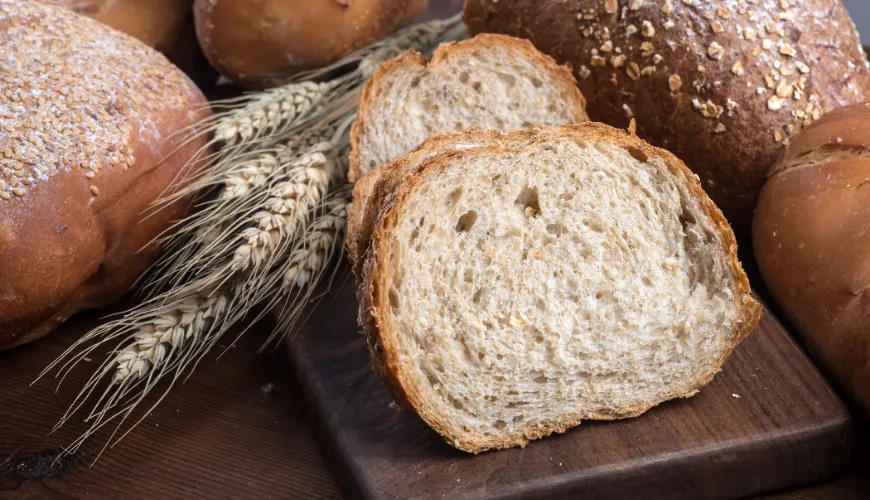
How Tahini Enhances Your Dishes and Healthy Lifestyle

A Healthy Snack Full of Nutrients and Flavors Called Tahini
Tahini, also known as tahini paste, is one of the oldest and most versatile foods known to mankind. This creamy product is made from finely ground sesame seeds and is the foundation of many traditional dishes around the world. Although it may seem unassuming at first glance, tahini is rich in nutrients that have a positive impact on health. In this article, we will explore what tahini is, how it is made, its health benefits, and how you can use it in your kitchen.
What is Tahini and How is it Made?
Tahini is a paste made from roasted or unroasted sesame seeds. The production process is simple but requires care. The seeds are first roasted (if roasted seeds are used), then finely ground until smooth. The result is a thick and creamy paste with a slightly nutty flavor.
Sesame seeds, from which tahini is made, are considered one of the oldest crops cultivated by humans. The history of sesame seeds dates back to ancient Babylon and Egypt, where these seeds were not only consumed but also used to produce oil. Today, tahini is an integral part of Middle Eastern, Mediterranean, and North African cuisines.
Health Benefits of Tahini
Tahini is not only tasty but also very healthy. It contains a high amount of healthy fats, which support cardiovascular health and maintain proper cholesterol levels. Tahini paste is also a great source of protein, which is especially important for vegetarians and vegans seeking alternative protein sources.
One of the significant nutrients that tahini contains is calcium. This mineral is key for bone and dental health. In fact, tahini contains more calcium than many dairy products, making it an ideal choice for those trying to limit or eliminate dairy products from their diet.
In addition to calcium, tahini is rich in magnesium, iron, and zinc. Magnesium is important for proper muscle and nervous system function, while iron is key for red blood cell production and oxygen transport throughout the body. Zinc plays a vital role in the immune system and helps the body fight infections.
Another significant component of tahini is antioxidants. These substances help protect the body from harmful free radicals, which can cause cell damage and lead to chronic diseases such as heart disease or cancer. Regular consumption of tahini can thus contribute to protecting your health and supporting longevity.
How to Use Tahini in the Kitchen?
Tahini paste is incredibly versatile in the kitchen. It can be used as a base ingredient for various sauces, dressings, marinades, or even desserts. Its slightly nutty flavor pairs well with both sweet and savory dishes. For example, when mixed with lemon juice, garlic, and olive oil, it creates a simple yet delicious salad dressing. This dressing can be used not only on salads but also as a dip for vegetable sticks or as a sauce for falafel.
If you're looking for a quick and healthy breakfast, try spreading tahini on toast and drizzling it with honey or topping it with banana slices. This simple recipe will provide you with energy for the entire day while giving you a dose of healthy fats and proteins. You can also add tahini to smoothies for creamy consistency and increased nutritional value.
Another great way to use tahini is in baking. Tahini paste can replace some of the butter or oil in baking recipes, which not only reduces the saturated fat content but also adds a mild nutty flavor that pairs well with chocolate cookies or banana bread.
Tahini in Traditional Dishes
Tahini is an essential part of many traditional dishes. Perhaps the most famous of these is hummus, made from chickpeas, tahini, lemon juice, garlic, and olive oil. This dish is popular worldwide not only for its taste but also for its nutritional values. Hummus is rich in protein, fiber, and healthy fats, making it an ideal snack or light lunch.
Another popular dish using tahini is baba ghanoush, a traditional Lebanese dip made from roasted eggplant. This creamy dish is often served with pita bread and is loved for its smoky flavor and creamy texture.
Tahini is more than just an ingredient—it's a food that combines taste with nutrition. This delicious paste is rich in health-promoting substances, easy to use, and its versatility in the kitchen is truly invaluable. If you're looking for a new way to enrich your diet, tahini and its paste are excellent choices. Whether you use it in traditional recipes or experiment with new dishes, tahini will bring not only delicious flavor but also nutritional benefits to your kitchen, supporting your health.

